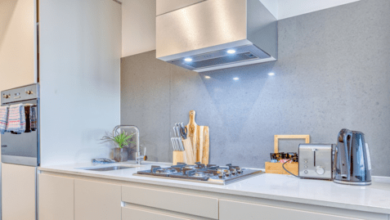The Role of Indoor Air Quality Sampling in Creating a Safe and Healthy Environment
Indoor air quality plays a crucial role in our overall well-being, as we spend a significant amount of time inside buildings. In this blog post, we will explore the importance of indoor air quality sampling and its impact on creating a safe and healthy environment. By understanding the significance of monitoring and improving indoor air quality, we can take proactive measures to protect ourselves and ensure the well-being of those around us.
The Importance of Indoor Air Quality
Indoor vs Outdoor
Air Quality Indoor air can often be more polluted than outdoor air due to various factors. Dust, pet dander, and volatile organic compounds (VOCs) are common sources of indoor air pollution. It is essential to acknowledge that outdoor air pollution, caused by particulate matter, ozone, nitrogen oxides, sulfur dioxide, and carbon monoxide, is responsible for millions of premature deaths annually.
Health Effects of Indoor Air Pollution Exposure to indoor air pollutants can have immediate health effects, especially for individuals with respiratory conditions. Airborne droplets, dust, allergens, mold, and VOCs can trigger allergies, asthma attacks, and other respiratory issues. Long-term exposure to poor indoor air quality may lead to chronic respiratory diseases, cardiovascular problems, and even cancer.
The Role of Indoor Air Quality Sampling
Understanding Indoor Air Quality Sampling
Indoor air quality sampling involves the collection and analysis of air samples to determine pollutant levels and identify potential sources of contamination. This process helps us gain valuable insights into the quality of the air we breathe and guides us in taking appropriate actions to improve it.
Benefits of Indoor Air Quality Sampling
- Identifying Pollutant Sources: Sampling allows us to pinpoint specific sources of indoor air pollution, such as mold, VOCs, or allergens. This knowledge enables us to address these issues directly, eliminating or reducing the source of contamination.
- Health Risk Assessment: Sampling helps assess the health risks associated with indoor air pollution. By analyzing air samples, we can identify pollutants that pose immediate health hazards and take necessary measures to mitigate these risks.
- Evaluating Ventilation Systems: Sampling helps evaluate the effectiveness of ventilation systems in removing pollutants and maintaining good air circulation. This information allows us to optimize the performance of HVAC systems and improve indoor air quality.
- Compliance with Standards: Indoor air quality sampling ensures compliance with health and safety standards. Regular monitoring and sampling help identify any deviations from recommended levels and enable prompt corrective actions.
Improving Indoor Air Quality
Prevention and Maintenance
Preventing indoor air pollution is crucial for maintaining a healthy environment. Regular maintenance of HVAC systems, proper ventilation, and minimizing the use of products that emit pollutants can significantly improve indoor air quality. Additionally, addressing any water leaks or moisture issues can prevent the growth of mold and mildew, which contribute to poor air quality.
Air Purification
Technologies Investing in air purification technologies can further enhance indoor air quality. High-efficiency particulate air (HEPA) filters, activated carbon filters, and UV filters are effective in removing airborne particles, chemicals, and microorganisms. These technologies help create a cleaner and healthier indoor environment.
Conclusion:
Indoor air quality sampling is a crucial step in ensuring a safe and healthy environment for everyone. By understanding the importance of indoor air quality and the benefits of sampling, we can take proactive measures to improve the air we breathe. Regular monitoring, identifying pollutant sources, and implementing effective mitigation strategies can significantly enhance indoor air quality. Let us prioritize the well-being of ourselves and others by making indoor air quality a top priority.


